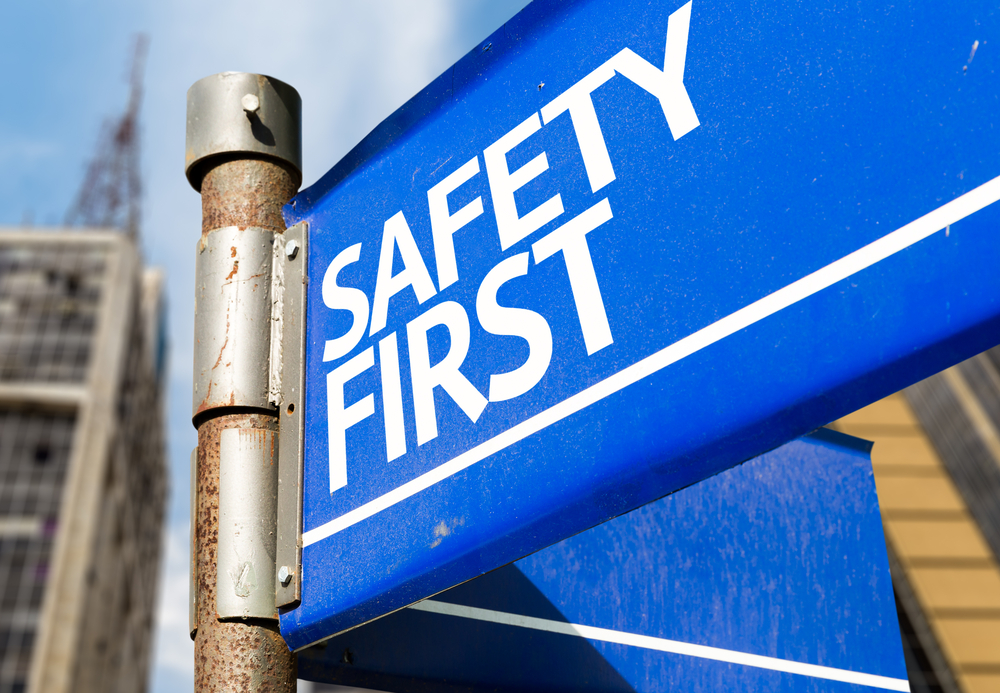Download Our Free Safety Culture E-book

Introduction To Safety Culture
Introduction To Safety Culture
Health and Safety has increasingly become a hot topic in countries across the globe as governments and businesses alike grapple with the increased costs and loss of productivity that come about as the result of Health and Safety incidents, never mind the personal cost to those involved and wider mental health and stress implications. While it’s all well and good to increase compliance through checklists, observation, reporting and penalising, ultimately the goal has got to be about building up a robust safety culture within organisations.
Safety Culture is about people, specifically your people and team, and how they work together. There are two main things that are common to all definitions.
1. It is about people’s values, attitudes, beliefs and behaviours. In an organisation with a good safety culture, these are geared towards safety as a priority.
2. It is about the spread of these values, attitudes, beliefs and behaviours. Organisations with a good safety culture have these spread throughout—from top management to the shop floor and in everything everyone does in the organisation.
To summarise, a safety culture is: “the core values, beliefs and behaviours resulting from a collective commitment by leaders and individuals throughout an organisation that appropriately prioritise safety against other organisational goals to allow business objectives to be undertaken without undue risk”.
Why Is It Important?
A good safety culture helps an organisation maintain safe operations. Having everyone, from operators to managers, take safety seriously, remaining watchful and avoiding compromises, means that operations are conducted in as safe a manner as is reasonable. This can significantly reduce the risk of accidents occurring.
By contrast, a poor safety culture means not everyone takes safety seriously: they are not watchful, are complacent, and compromise too readily. This may mean that there are workers or operations that are at risk of having a higher number of incidents and accidents. In organisations with a poor safety culture, incidents, especially near misses, are not reported or acted upon adequately and instructions are not properly followed.
This is neither efficient nor effective in the long run. For example, if incidents are not reported and lessons not learnt from them, they will continue to occur. This may result in an undue risk to workers and the public. Safety culture is, therefore, an important driver in ensuring safety is integrated into an organisation’s operations.
Implementing / Improving Safety Culture
There are several important lessons that should be noted when trying to improve an organisation’s safety culture. Firstly, many organisations try initially to assess their current safety culture (also referred to as 'safety climate'). This is done through: surveys and questionnaires; selective interviews of staff; and observing staff as they go about their business. These methods give decision-makers a good overview of the organisation’s safety culture. Another important lesson is that it can take time to improve an organisation’s safety culture because people’s attitudes and behaviours take time to change.
Lastly, making changes to safety culture usually starts with smaller changes at the local level. For example, having a good reporting system for incidents and events, and ensuring these are acted upon in a just and fair manner goes a long way to improving the overall culture of the organisation. From these local changes, larger wholesale changes to cultures emerge later on. Therefore, it is important to ensure that these building blocks of a safe culture are addressed first, i.e. a bottom-up approach rather than a top-down approach. Remember building a safety culture is for everyone's benefit.
In Conclusion
A good safety culture helps an organisation maintain safe operations. It is good for everyone's benefit and ultimately is good for business.


3 Steps To Developing A Successful Safety Culture
How does an amusing change to pedestrian crossing signals relate to a safety culture?
Well, what was a very clever city-focussed attention grabber, which was presumably developed to celebrate an event, had the added benefit of driving public safety. And this is a wonderful example of how small, 'soft' things that can be done within organisations can positively influence or 'nudge' the development of an internal safety culture
Here are three 'soft' actions that every organisation can implement that will help move that organisation towards developing a positive safety culture and, as a result, improve the chance of everyone in the organisation going home safely every day.
1. Do the unexpected
2. 'Anoint' a Safety Champion
3. Reward the behaviour you want to see


Traditional values in developing a safety culture
Reaching the same outcome can be achieved in a number of different ways and sometimes the old-fashioned ways can be the best. This is as true in health and safety as it is in many other areas.
1. Keep it real
2. Keep it simple
3. Keep it consistent
In short, be consistent, embed habits into your safety culture and before you know it, you will have a healthy, safe workplace.

A Strong Safety Culture - Getting Started Is Just The Beginning
So what are some of the ways to embed a long-term positive change to an organisation's safety culture?
From researching a range of different training providers, it seems that the following standards are generally accepted to be key steps in embedding a positive health and safety culture and making sure it 'sticks' long term.
1. Set your health and safety goals and a plan to meet them.
2. Communicate your goals to your organisation clearly, and appropriately.
3. Walk the talk.
4. Ensure health and safety are high on the list of company priorities.
5. Keep an open door.
6. Collect all health and safety incident details, big or small.
7. Keep your health and safety training up to date and followed up.

8 Investments To Bring A Safety Culture To Life
Now, while it is easy to criticise the 'smashed avocado' approach that many younger folk have adopted as evidence of their not taking life seriously enough, recent readings about mindfulness suggest that time and money spent at places like cafes are appropriate investments.
Enhancing a moment-by-moment awareness of your thoughts, feelings, bodily sensations, and surrounding environment, through a gentle, nurturing lens, such as one is able to achieve when surrounded by old books and a great glass of lemonade, is one way of helping you to have a clear mind as you re-enter your office to confront the next day's challenges. And if that challenge is to do with Health and Safety and you are able to take on that challenge with an open mind and a fresh perspective, then the investment in a 10-minute break in your favourite cafe is money well spent.
Let's examine eight other areas you can invest in to get the most out of your health and safety budget.

Fire Safety In The Workplace
Of the many potential health and safety hazards to consider, perhaps the most terrifying to contemplate are fire related. For office workers without heavy machinery to manage, forklifts to dodge, heights to scale or holes to fall into, however, it's easy for complacency to set in, and the very real danger that fire can present can be ignored. Despite this fires are the most common cause of damage and death in any workplace.
Whether you're a business owner, landlord or employee, it is in your best interests to ensure that your workplace is safe from fire-related hazards. When developing an overall safety culture, fire safety should be high on everyone's list of dangers to be aware of. Matt Jones Director of Advanced Safety believes that there are four stages of fire hazard management to consider: preparation, prevention, management, aftermath. Let's look at each in detail….
Testimonials
Innovative companies across 13 countries trust Intuto with their training. Here's what they're saying about us.

Outstanding e-learning platform. Intuto's ease of use is awesome. It's easy to create modules and roll them out to a big team so that everyone is on the same page.
James B,
Venues Wellington

Expert team who are super supportive and great to speak with.
Matt J,
Advanced Safety

Nikki H,
Potential Unleashed

Joanna C,
Dog Safe Workplace

Sylvie T,
MyHR.com.au
Recent Awards
Award winning online training platform as voted by our customers.



Let's Get Started
Take Intuto for a spin yourself, start an obligation free trial to find out if Intuto is the right fit for you.
Affordable Pricing
Take a look at our pricing. We think you'll be pleasantly surprised.

